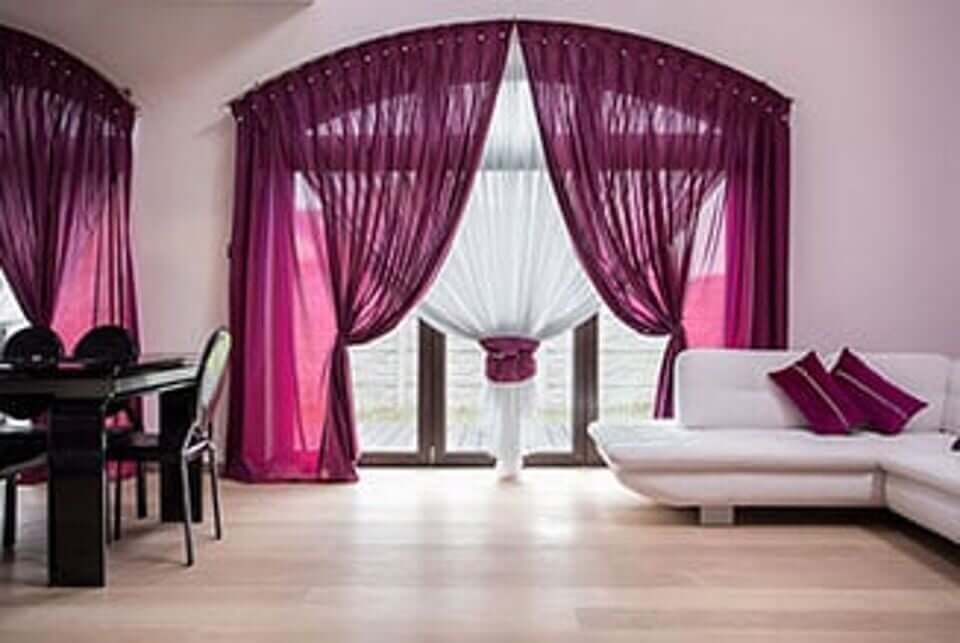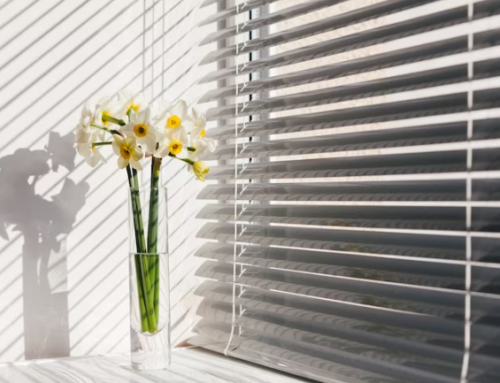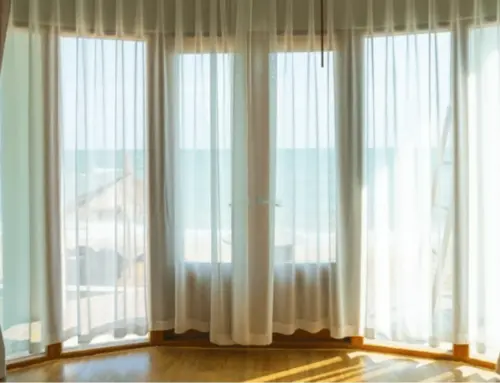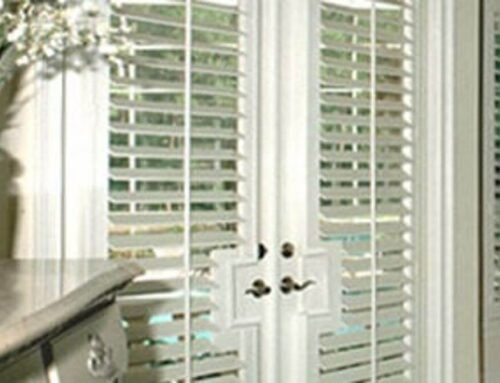Bright sunlight streaming through sheer curtains can lift your spirits. Heavy drapes in bold colors can make a space feel cozy—or overwhelming. What’s at play here isn’t just taste; it’s how your brain reacts to color and movement.
Window treatments do more than block light or add style—they can shift the entire mood of a room. The flow of fabric and the tone of color can calm, energize, or even make you feel more focused. It’s subtle, but powerful.
Whether you want to make a space feel lighter, warmer, or more peaceful, your window treatments might be the easiest place to start.
How do window treatment colors affect mood and emotions?
Window treatment colors play a subtle but powerful role in influencing mood and emotions within a space. Through the principles of color psychology, designers often use specific hues to evoke particular emotions or establish the tone of a room. Here’s how different window treatment colors can impact emotional response:
- Soft Blues and Greens: These cool colors promote calmness, relaxation, and clarity. Ideal for bedrooms, offices, or meditation spaces, they help reduce stress and create a soothing atmosphere.
- Neutral Tones (Beige, Cream, Taupe): Neutral colors create balance, simplicity, and warmth. They blend easily with various styles and evoke a sense of peace and comfort.
- Warm Colors (Terracotta, Soft Yellows, Rust): Warm hues are energizing and inviting. They can make large spaces feel cozier and enhance sociability in living rooms or kitchens.
- Bold Colors (Navy, Charcoal, Deep Plum): These shades can evoke sophistication, drama, or introspection. Often used in more formal spaces or to create focal points.
- White or Off-White: Clean, crisp, and airy, white promotes mental clarity and openness, making rooms feel larger and more serene.
Choosing the right window treatment color helps align the emotional tone of a room with its function, making your home feel not just designed, but lived in.
What role does fabric texture play in influencing room atmosphere?
The texture of fabric in window treatments plays a vital role in shaping the atmosphere of a room. Beyond color and style, the texture of the fabric can influence how a space feels—whether it’s warm and cozy, light and airy, or structured and refined. Here’s how different textures affect room ambiance:
- Sheer and Lightweight Fabrics (e.g., voile, linen blends): These materials allow filtered natural light to pass through, creating an open, breathable, and calming atmosphere. They’re ideal for spaces where softness and serenity are essential, such as bedrooms or sunrooms.
- Heavy and Opaque Fabrics (e.g., velvet, brocade): Thick, textured materials add a sense of formality, warmth, and privacy. They can make a room feel grounded and intimate—perfect for formal living rooms, libraries, or dining areas.
- Smooth, Crisp Fabrics (e.g., cotton, polyester blends): These fabrics offer a clean, structured look that suits modern or minimalist spaces well. They convey neatness and simplicity without feeling cold.
- Natural Textures (e.g., bamboo shades, woven wood): Organic materials bring an earthy, relaxed vibe and tactile warmth to a room, ideal for casual or eco-conscious interiors.
The fabric’s weight, weave, and movement all contribute to the emotional tone of a space, influencing how people feel and interact within it.
Can different types of window treatments impact mental wellbeing?
Yes, different types of window treatments can have a significant impact on mental well-being by shaping how light, privacy, and aesthetics function in a space.
The right treatment can enhance comfort, reduce stress, and support healthy routines. Here’s how various window treatments affect mental wellness:
- Sheer Curtains and Light-Filtering Shades: These allow gentle, natural light into a room, which helps regulate circadian rhythms, improves mood, and increases focus during the day.
- Blackout Curtains and Room-Darkening Shades: Essential for restful sleep, especially in bedrooms, these treatments block out light and noise—crucial for maintaining mental and physical health.
- Motorized or Smart Window Treatments: Automation reduces daily stress by offering convenience and consistency. Timed openings and closings can align with your natural sleep-wake cycle.
- Layered Treatments (e.g., blinds + curtains): Offers flexibility in controlling light and privacy, helping to create personalized spaces that feel safe, secure, and calming.
- Natural Materials (e.g., bamboo, woven woods): Bring a sense of connection to nature, which is known to reduce anxiety and improve emotional balance.
Choosing the right window treatment is more than a design decision—it’s a tool to support comfort, relaxation, and overall emotional well-being in everyday life.
How does natural light interact with window treatments to change mood?
Natural light plays a powerful role in influencing mood, and how it interacts with window treatments can dramatically shape the emotional tone of a room. The type, placement, and material of window treatments help regulate the amount, direction, and quality of sunlight that enters your space—ultimately affecting how you feel throughout the day. Here’s how this interaction can impact mood:
- Light-Filtering Treatments (e.g., sheer curtains, zebra shades): These soften harsh daylight, creating a calm and welcoming ambiance. They reduce glare while maintaining brightness, which can lift mood and improve focus.
- Adjustable Options (e.g., blinds, roller shades): The ability to control the angle and amount of sunlight promotes a sense of autonomy and comfort, helping reduce stress and overstimulation.
- Blackout and Room-Darkening Treatments: These support mental well-being by enabling better rest. They’re especially effective for improving sleep quality in bedrooms and creating cozy, restful zones.
- Natural Light Enhancement: Treatments that maximize daylight exposure during morning hours can support circadian rhythm regulation, boost serotonin levels, and enhance alertness and productivity.
- Direction and Fabric Matter: South- or east-facing windows with light, airy fabrics can energize spaces, while west-facing windows may benefit from heavier treatments to soften intense afternoon light.
The balance between natural light and thoughtful window treatments has a direct influence on mental clarity, energy, and overall emotional well-being.
Feel-Good Spaces Start with Better Windows
Your home should lift you up, not weigh you down—and the right window treatments can make a bigger difference than you might think. At The Blind Man, we design custom solutions that don’t just look great—they help shape the way your space feels. Want a calm, breezy atmosphere? Soft, airy fabrics can do that.
Need a little more energy in the room? Color choice matters more than you’d expect. From privacy to coziness, light control to mood setting, we focus on the details that turn a house into a retreat. Our team helps you choose styles, textures, and tones that match your vibe and your lifestyle.





